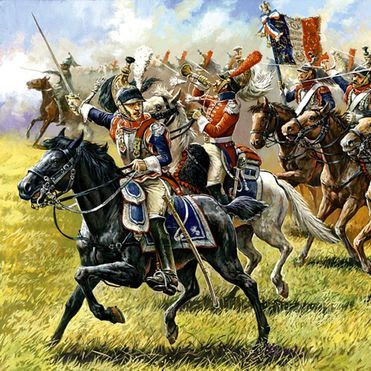
This is the senior regiment in the British Army. Also known as the "Royal Scots" the 1st Foot had the blue facings of a royal regiment. This unit has three stands because of the relatively large number of troops in this battalion. Note that the command stand on the far left includes a pioneer or sapper. These men were equipped with an axe and tasked with duties of clearing the route of march through the forest. Also, note that there are several different colors of pants. In the field, and especially in North America at the end of a very long supply line, troops wore whatever they could procure. Finally, note the sergeant on the stand on the right has a musket instead of a pike just like the sergeant in the 100th Foot posted earlier. All of these figures are from the Foundry Napoleonic British Range.






